
The exhibition showcases paintings, drawings, and sculptures by Miloslav Chlupáč
Prague – Today, the Gallery U Betlémské kaple in Prague at Betlémské náměstí opened an exhibition of painter and sculptor Miloslav Chlupáč (1920 to 2008). He was one of the artists whose freedom of creative expression was restricted by the regime in the second half of the 20th century, and therefore he also dedicated himself to restoring the façades of historical buildings, similar to other sculptors. In the 1960s, Chlupáč was also an organizer, an occasional publicist, and an unofficial spokesperson for the free-thinking wing of the artistic community.
Chlupáč's work throughout his life took the form of classical sculpture. He built his female figures from sharply defined volumes, and in the 1960s the shape of the body in his sculptures was only suggested, reaching the edge of abstraction. Alongside sculpture, he devoted his entire life to painting, although he exhibited it only rarely. One can find elements from the history of modern art in his paintings, such as cubist stylization of shape or the atmosphere reminiscent of the works of painter Rousseau.
Miloslav Chlupáč originally studied medicine, but after the closure of universities in 1939, he trained as a stonemason. During the war, he began studying at the Prague School of Applied Arts, and after 1945, as president of the student council, he participated in the reform of UMPRUM, which elevated it to a higher education institution.
"Chlupáč was an extraordinary personality in Czech sculpture and a person of exceptional character, which is inherently connected to his artistic expression. In him lay the guarantee of Chlupáč's unwavering thinking and principled actions, which positioned him at the forefront of his generation and for a time justly at the center of artistic events," stated art historian Jiří Šetlík in his text for the exhibition.
After 1945, Miloslav Chlupáč attended lectures by Jan Patočka at the Faculty of Arts of Charles University, and later was significantly influenced by philosopher Petr Rezek. He worked as an art editor for the weekly Kulturní politika, which ceased publication in 1949. As early as 1948, he participated as a delegate in the 1st International Congress of Art Critics in Paris.
He was a leading spirit of the Block of Creative Groups, a platform that brought together independent art groups as a counterbalance to the Union of Czechoslovak Artists. He was a member of the group Máj 57, which in 1957 was the first to disrupt the monolith of official exhibition policy. In the 1960s, he was able to exhibit and, in collaboration with architects, realized several sculptures for public spaces, and also participated in international sculpture symposiums abroad.
After 1968, Chlupáč was one of the most affected artists; he had to make a living only in manual labor jobs or through restoration work, could not exhibit, and did not receive permission to travel. It was only in the 1980s, after the age of 60, that he could again travel for work and artistic contacts, participate in several architectural sculptures, and return to sculptural creation. He carved his sculptures into stone himself well into old age, despite being seriously ill in his later years.
Chlupáč's work throughout his life took the form of classical sculpture. He built his female figures from sharply defined volumes, and in the 1960s the shape of the body in his sculptures was only suggested, reaching the edge of abstraction. Alongside sculpture, he devoted his entire life to painting, although he exhibited it only rarely. One can find elements from the history of modern art in his paintings, such as cubist stylization of shape or the atmosphere reminiscent of the works of painter Rousseau.
Miloslav Chlupáč originally studied medicine, but after the closure of universities in 1939, he trained as a stonemason. During the war, he began studying at the Prague School of Applied Arts, and after 1945, as president of the student council, he participated in the reform of UMPRUM, which elevated it to a higher education institution.
"Chlupáč was an extraordinary personality in Czech sculpture and a person of exceptional character, which is inherently connected to his artistic expression. In him lay the guarantee of Chlupáč's unwavering thinking and principled actions, which positioned him at the forefront of his generation and for a time justly at the center of artistic events," stated art historian Jiří Šetlík in his text for the exhibition.
After 1945, Miloslav Chlupáč attended lectures by Jan Patočka at the Faculty of Arts of Charles University, and later was significantly influenced by philosopher Petr Rezek. He worked as an art editor for the weekly Kulturní politika, which ceased publication in 1949. As early as 1948, he participated as a delegate in the 1st International Congress of Art Critics in Paris.
He was a leading spirit of the Block of Creative Groups, a platform that brought together independent art groups as a counterbalance to the Union of Czechoslovak Artists. He was a member of the group Máj 57, which in 1957 was the first to disrupt the monolith of official exhibition policy. In the 1960s, he was able to exhibit and, in collaboration with architects, realized several sculptures for public spaces, and also participated in international sculpture symposiums abroad.
After 1968, Chlupáč was one of the most affected artists; he had to make a living only in manual labor jobs or through restoration work, could not exhibit, and did not receive permission to travel. It was only in the 1980s, after the age of 60, that he could again travel for work and artistic contacts, participate in several architectural sculptures, and return to sculptural creation. He carved his sculptures into stone himself well into old age, despite being seriously ill in his later years.
The English translation is powered by AI tool. Switch to Czech to view the original text source.
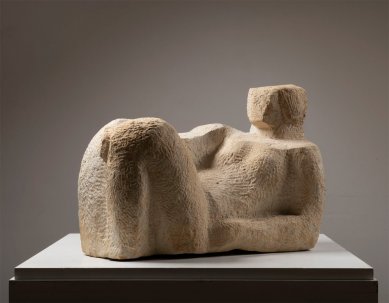
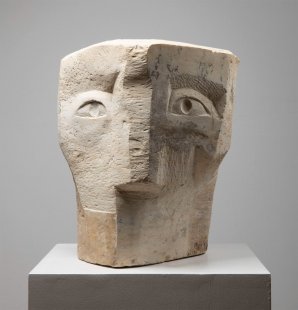
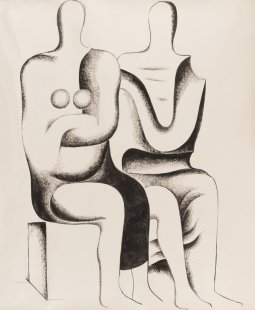
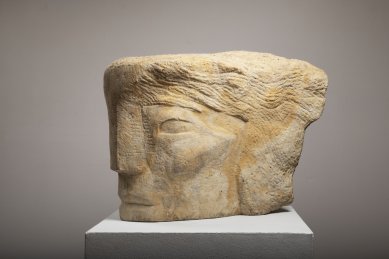
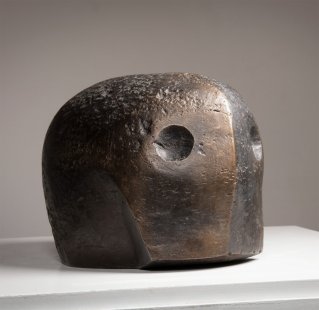
0 comments
add comment











